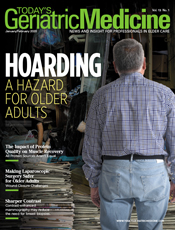
January/February 2020
From the Editor: The Weight of Stuff In a society that’s made Marie Kondo a household name, clutter may seem an inevitable part of daily life. We’re all busy, and most of us might admit to having too much stuff. (As George Carlin said, your house is just a pile of stuff with a cover on it.) Clutter is a condition tied both to overconsumption and hectic lifestyles. But thanks to Kondo’s strategies, thousands claim to have overhauled their homes and achieved a serenity that clutter kept at bay. Her philosophy is simple and sensible: “Keep only those things that speak to the heart, and discard items that no longer spark joy. Thank them for their service—then let them go.” It’s hard to argue with this approach. We know that we have more than we need, that we don’t use or care for much of what we have, and that worrying about it all leads to stress. Letting go seems to promise a relief from the psychic weight of carrying all that baggage. But it doesn’t work for everyone. Because clutter and fretting over clutter seem so ubiquitous, we may think we understand hoarding. We casually may use the word itself to refer to amassing excess “stuff,” often with little recognition that hoarding is something far more insidious and well beyond the ability to be “Kondo’d” into submission. While it might be fairly simple for most people to “let go,” the inability to do so is at the heart of the problem for hoarders. Kondo’s slogan, however, “Tidy your space, transform your life,” may ring true for hoarders. If they could simply tidy their spaces, their lives would be transformed. How to get there is the challenge, and it will take much more than Kondo’s organizing talents. Hoarding is the excessive acquiring of possessions and the inability to let go of those that have no use or value to the hoarder. Just the thought of getting rid of belongings can be paralyzing to hoarders. It’s a condition that’s especially common among older adults, for whom its consequences can be most serious. Chief among these are fall hazards and the inability to have others in one’s house, which exacerbates an existing problem among many elderly individuals—loneliness. In addition, should sufferers experience a medical emergency or a fire breaks out in their home, the sheer mass of belongings can prevent first responders from gaining access. Furthermore, while treatment is available for hoarding, many sufferers never receive it, largely because hoarding can be an invisible problem. Because it doesn’t show, they can easily escape attention. In this issue, contributor Lindsey Getz looks at everything clinicians need to know in order to recognize hoarding disorder and help affected patients. |
